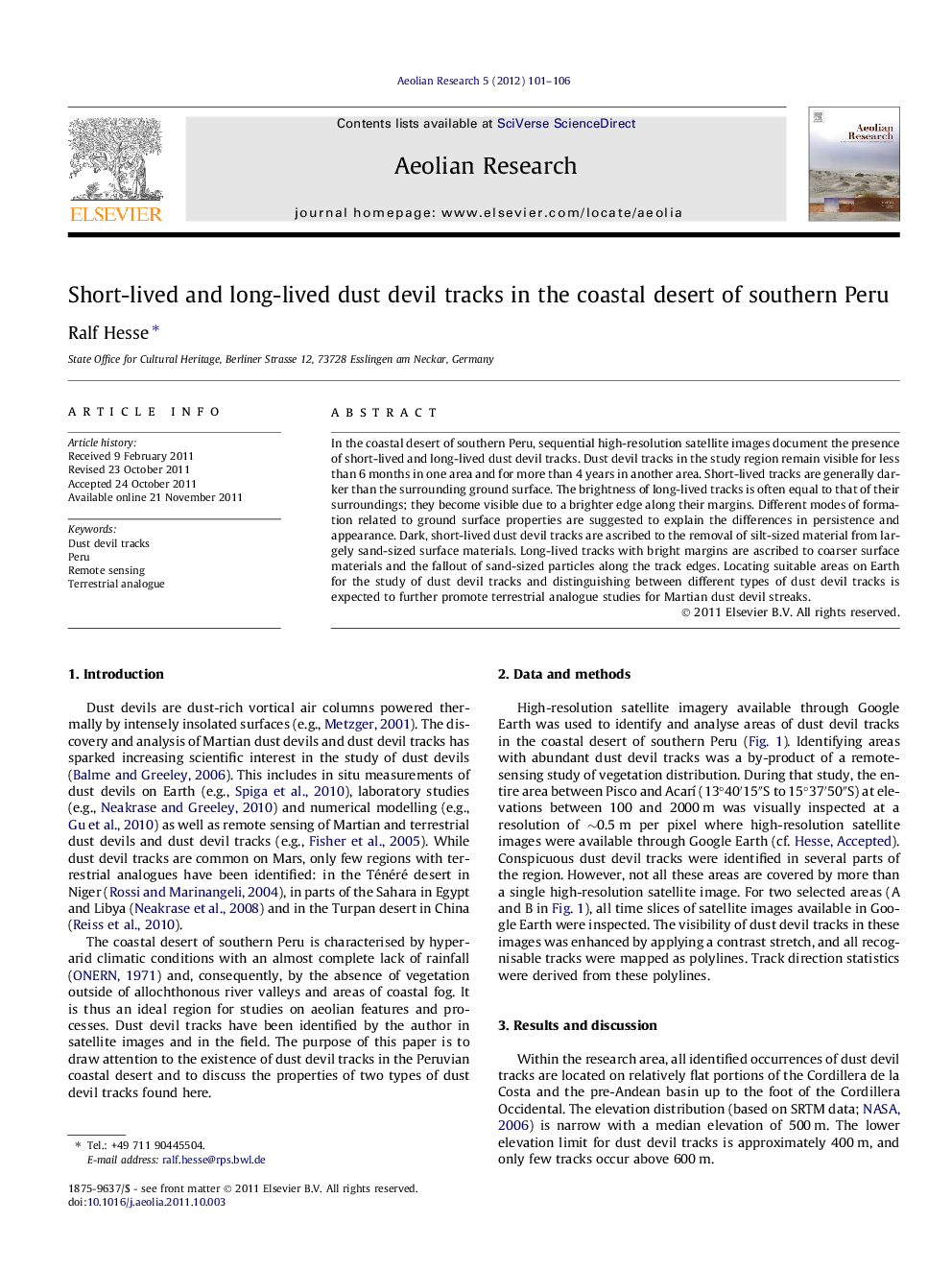| Article ID | Journal | Published Year | Pages | File Type |
|---|---|---|---|---|
| 4673952 | Aeolian Research | 2012 | 6 Pages |
Abstract
In the coastal desert of southern Peru, sequential high-resolution satellite images document the presence of short-lived and long-lived dust devil tracks. Dust devil tracks in the study region remain visible for less than 6 months in one area and for more than 4 years in another area. Short-lived tracks are generally darker than the surrounding ground surface. The brightness of long-lived tracks is often equal to that of their surroundings; they become visible due to a brighter edge along their margins. Different modes of formation related to ground surface properties are suggested to explain the differences in persistence and appearance. Dark, short-lived dust devil tracks are ascribed to the removal of silt-sized material from largely sand-sized surface materials. Long-lived tracks with bright margins are ascribed to coarser surface materials and the fallout of sand-sized particles along the track edges. Locating suitable areas on Earth for the study of dust devil tracks and distinguishing between different types of dust devil tracks is expected to further promote terrestrial analogue studies for Martian dust devil streaks.
Keywords
Related Topics
Physical Sciences and Engineering
Earth and Planetary Sciences
Atmospheric Science
Authors
Ralf Hesse,
